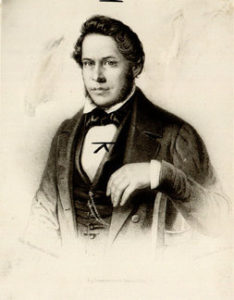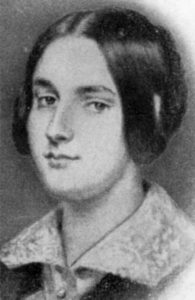Brain behind bunch of eponyms – Henle
Crypts of Henle (Microscopic pockets located in the conjunctiva of the eye), Henle’s membrane (Bruch’s layer forming the inner boundary of the choroid of the eye), Hassall-Henle bodies, Henle’s fissure, Henle’s ampulla, Henle’s layer, ligament, Spine, Henle’s sheath, loop of Henle, Glands and tubes of Henle
Do you realize what’s common in all the above?

Jacob Henle was a great German anatomist and one of the most important histologists of all times. He was born on July 19, 1809, Fürth, near Nuremberg, Bavaria
Friedrich Gustav Jakob Henle:
His father, Wilhelm, was a merchant; his mother, Helena Sophia, was the daughter of a rabbi. At the age of 19, he began studying medicine in Bonn, where just 4 years later he wrote his doctoral thesis: De membrana pupillari aliisque oculi membranis pellucentibus“. Koch’s postulates are attributed to Robert Koch, who received the 1905 Nobel Prize in Medicine or Physiology “for his investigations and discoveries in relation to tuberculosis.” Jakob Henle was a professor at the University of Göttingen when Koch enrolled as a student there in 1862, and Henle was one of the early proponents of the idea that contagious diseases were caused by microorganisms.
Jacob was a social and charismatic person, his lectures were attended even by medical laymen. Gottfried Keller, an author from Switzerland, once visited his talks and wrote about his impressions in his famous book „Der grüne Heinrich“ (Green Heinrich). Even his private life became a topic in the literature during these days; he married Elise Egloff, a woman who once was a maidservant and nanny in Zurich, at the house of one of his colleagues.

This lead a few authors to write about the relationship. A very interesting article “The Professor and the Seamstress: An episode in the life of Jacob” clearly explains the dramas, plays, novels and movies on his life. Unfortunately, his marriage lasted a little less than three years, since Elise contracted pulmonary tuberculosis. She died on February 21st 1848 at 27 years of age in Jacob’s arms. After a year, he married a friend of her sister Helene, Marie Richter, the daughter of a Prussian army officer.
Jacob was a famous lecturer, a poet and a fine musician. He had a wide circle of friends, including the composer Felix Mendelssohn (1809-1847) and Humboldt. In his last years, he bestowed countless honours; the Universities of Breslau made an honorary doctor of philology, the University of Edinburgh conferred him Dr. of common law.
Also, read Mastermind behind Diopter
His students say “there was no part of the human body that he (der alte Jakop) did not explore”
With no doubt, Jacob is the greatest histologist of all times.
He died on May the 13th 1885 of a renal sarcoma at 76 years of age. There is a street in Göttingen with his name: Jakob-Henle-Straße, and another in his native town Fürth.